How to Take Charge & Reorganize Your Finances in a Crisis to Emerge Stronger
/Strategies to mitigate the impact and take advantage of the help and resources available during a financial crisis.
Read MoreStrategies to mitigate the impact and take advantage of the help and resources available during a financial crisis.
Read MoreUseful information for people, especially those who are new to the United States or are building credit for the first time.
Q: I’m new to the US. What can I do to get a credit score?
A: Open a small credit card with a local credit union…
Are you getting ready for a life change like becoming self-employed, growing your business or making a large purchase?
Are you new to the United States or just starting to figure out how credit works?
Read More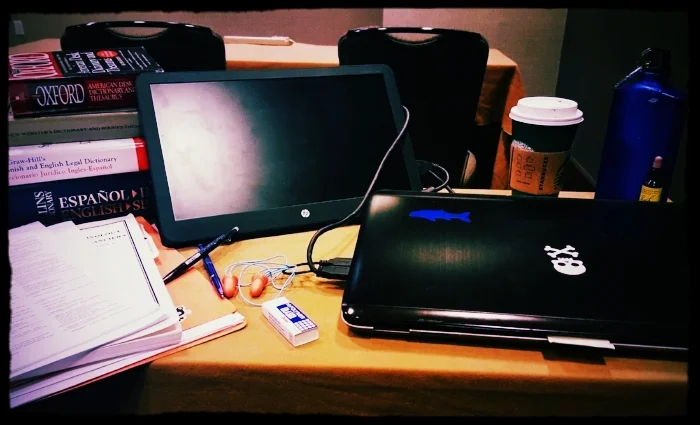
Passing the American Translators Association (ATA) certification exam with its daunting 15% pass rate is nothing to shake a stick at and preparing for it should not be taken lightly. Along the same lines, many countries offer rigorous programs and testing to become “sworn translators,” such as Spain and Brazil, though the ATA exam does not preclude candidates based on nationality. In the United States, there is no such thing as a government-approved “sworn translator”. Translation isn’t an industry that’s regulated by the government in the US. You don’t have to pass any boards or bars to deem yourself a translator.
In some ways, not being regulated by the government is both good and bad. The good part is, for clients, the market is very competitive. It’s also good for professionals because you can get relevant experience and build a fruitful career without having your hopes and dreams dashed by test anxiety or suffocating student loans. Overall, it’s less bureaucratic.
The downside for clients is having to sift through the numerous providers, possibilities, and uncertainties for translation services: Do I hire a professional? Can my bilingual employee or friend do this for me? What if I need a certified translation? The answer to all of those questions is that it depends. There have been many other articles devoted to this topic and an exceptional publication about it is available on the ATA website here.
This is where the ATA steps in, to “allow translators to demonstrate that they meet certain standards of the translation profession” and somewhat fill the void of not having “sworn translators” in the United States. As the largest national association for translators in the US, the ATA offers a goal for translators to strive for. Being “ATA-certified” has clout. It’s not an easy exam to pass and most people don’t do so on the first attempt. It provides proof of a translator’s competency in a given language pair.
The exam itself consists of two passages, each about 250 words. Traditionally, candidates would write out their translations for the exam passages by hand, only using paper dictionaries and resources. However, as the entire industry has shifted into the digital world, ATA has recognized the fact that professional translators use technology and online resources to produce their work. Thus beginning in 2015 they have started offering the exam in a computerized format, with limited internet access, bandwidth permitting. A list of the permitted websites to access during the is available here. In essence, you can access online dictionaries, including Word Reference, Linguee, Oxford and Merriam-Webster. However, you cannot access dictionaries or sites that include Q&A forums such as Proz or the Word Reference forums.
My quest to pass the ATA exam began in January 2016. I ordered a practice test, which is a previous year’s exam to do at home and have it evaluated by an actual ATA exam grader. I tried to emulate the exam conditions as much as possible by limiting myself to 3 hours, completing the translations by hand and only using paper dictionaries. On one passage I passed, and the other one I failed by 3 points. I lost a point for a comma. Another for putting “with respects to” instead of “with respect to.” Small mistakes that amounted to a big loss. My colleague Juan Lizama wrote about this phenomenon, based on presentations, interviews and study groups where ATA exam graders gave their feedback, in his article “Death by A Thousand Cuts” on the OSTI blog.
In March 2016 I joined a group of fellow translators to form a study group, through the Oregon Society of Translators and Interpreters (OSTI). The study group was led by the then-OSTI president, Helen Eby. Every week a group of 6-16 Spanish-English (and some French) translators would complete a sample passage, review a colleague’s translation and meet online for discussion. In addition to practicing translation, we also had the honor of having presentations by actual ATA exam graders, Anne Louise, Holly Mikkelson and Paul Coltrin. The generously gave their insights as to how the exams are graded and common tripwires. Below are some nuggets of wisdom I’ve gleaned from all of this preparation.
Bear in mind, most of these resources and tips are geared for Spanish-English translators. Others, like diagramming, can possibly work for any language pair. Anne Louise recommended diagramming to break down long, convoluted sentences. A fantastic tool to help break down English sentences is the Fox Type Sentence Tree available here. If anyone knows of a similar tool for Spanish or Portuguese, please let me know!
Another valuable pointer from the graders is to be mindful of collocations. This is an area where sticking to the literal translation will burn you. A great collocation resource to see which words go together best is available by Oxford here.
Some language-specific tips are that Spanish loves nouns and English loves verbs. See where words ending in “-ción" can be translated to end in “-ing” for a more natural flow. Many times reflexive verbs in Spanish translate best to the passive tense in English. I’m not a big fan of the passive tense, but sometimes there really isn’t a better option.
Trust your gut and original instinct. When going back over the translated text, don’t change things unless they’re really needed, such as misspellings and grammar errors.
If you make the same mistake more than once, you’ll only get docked once. For example, if you erroneously translate a term the wrong way, and that term appears several times in the text, you’ll only be discounted points for the first occasion.
Take a break, go to the bathroom and do some stretches after finishing the first draft. I did some yoga in the hallway before going back in to edit and proofread my exam passages.
Don’t rely on internet resources being available for the computerized exam, due to limited bandwidth or technology issues. Bring paper dictionaries and resources and be prepared to complete the exam by hand should technical difficulties arise.
For the handwritten exam, don’t write out a first draft and then a second draft. You’ll lose a lot of precious time that could be spent revising and proofreading. You can use standard proofreading marks to insert or delete text as needed. Just make sure it’s legible.
I took the computerized exam and would highly recommend that for translators, if possible. Aside from the obvious reasons of being able to easily edit and rearrange your sentences, it will leave your hands less fatigued than handwriting everything. However, not all exam sittings offer computerized versions and technology is known to fail, so be prepared to write it out if needed.
· Computer, with the websites you want to access pre-loaded on your browser
· Word Pad app, up and running. No spell-check or grammar correction allowed. If the moderators see the red squiggly lines under words or passages, you will be disqualified.
· Unabridged bilingual dictionary
· English (target) monolingual dictionary and thesaurus
· Spanish (source) monolingual dictionary
· Specialized dictionaries (I printed the PDF versions of some legal and business glossaries, and had a PDF of Black’s Law dictionary available on screen)
· Erasable gel pens (recommended for handwritten exams. Your hand doesn’t have to press down so hard and thus doesn’t fatigue as easily)
· Erasers
· Highlighter
· Scratch paper
· Earplugs
· Rescue Remedy
· Water
· Coffee
· Good luck charms
After all of these months of preparation and review, travelling 1000 miles to take the exam while 7 months pregnant, and finishing it with just 30 seconds to spare, I’m happy to report that I passed the exam on my first attempt and am now officially a certified translator for Spanish to English translations! Along with certification comes continuing education requirements so my inner nerd delights at having to profundizar in the subject. Next up I’m planning to prepare for and take the Portuguese to English exam. If anyone wants to study with me or has any questions on the exam experience, please reach out or leave a comment!
http://atanet.org/certification/aboutcert_overview.php
http://www.atpiesp.org.br/associacao/traducao-juramentada/
https://www.atanet.org/publications/getting_it_right.php
http://atanet.org/certification/aboutpractice_test_instructions.php
http://ostiweb.org/death-by-a-thousand-cuts/
http://ostiweb.org/ata-study-program-week-1/
http://www.huffingtonpost.com/2014/10/01/diagram-sentence-grammar_n_5908462.html
https://foxtype.com/sentence-tree
http://www.freecollocation.com/
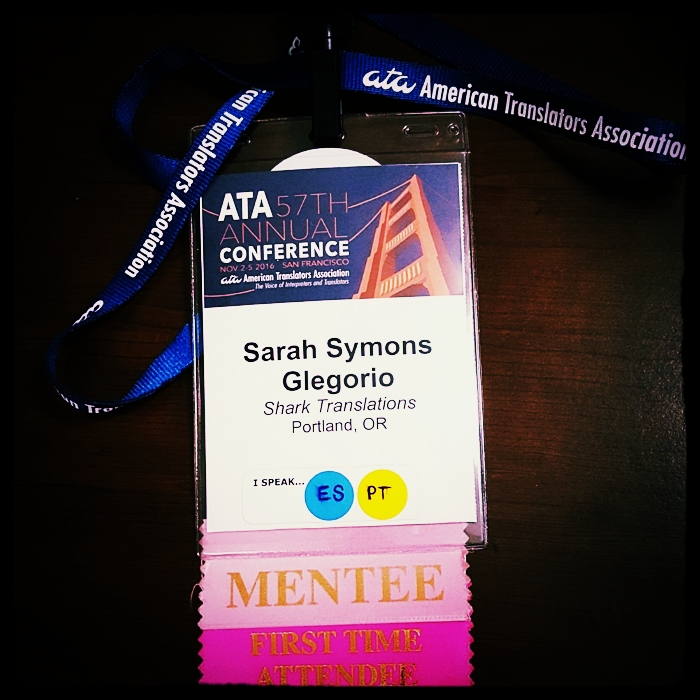
It was my first time attending the annual ATA (American Translators Association) conference, which this year was held November 2-6 in San Francisco. I was equally giddy and nervous. Being surrounded by so many worldly multilinguals was awe-inspiring. It felt like I had found my tribe. I saw famous people (famous to me and those in the translation world) on the escalator and they smiled and are real, approachable people!
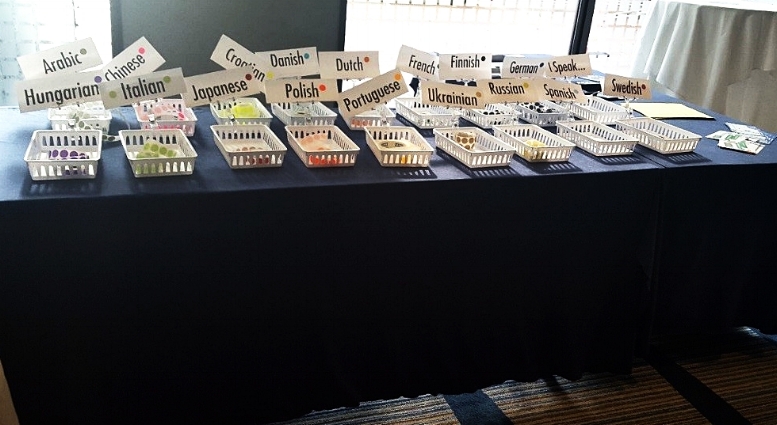
Smattering of the languages represented
As a first timer and an introvert, I had the best possible introduction to the conference. The first session was “Networking for Introverts” by Anne Goff, which had me chuckling right away with the tip: “Don’t go to networking events!” The idea is that if events are marketed as such i.e., “after-work networking” then they’re usually full of semi-desperate, CV-shoving people who just want to unload their stack of papers rather than develop relationships. However, if an event has an interesting topic and can be a learning opportunity, then go! Another trick to get introverts to network is to RSVP or pay a registration fee. You’ll be more motivated to go if you have someone to meet there or if you’ll lose money by not showing up. Look up current events before going. Network for career advice and come up with questions in advance. At presentations, say hello to the people sitting nearby and ask their opinions. The most important part is to FOLLOW UP afterwards. Text or email the people you’ve met within 24 hours. Follow up again and not just once. Do so a few days, and months afterwards and keep the cycle going to maintain the relationship. Finally, don’t thank people for taking the time to meet with you because then it sounds like you don’t offer anything.
ATA offers a Buddies and Newbies program where they pair conference veterans with first timers to meet before the conference begins and possibly attend a session together. Since the buddy to newbie ratio was about 5:1, my buddy, Jamie Hartz graciously herded a flock of newbies around and we all had lunch together. It was the perfect way to meet new colleagues and I would highly recommend anyone going to be either a buddy or a newbie.
After reading her column “Fire Ant and Worker Bee” the Translation Journal for years, and reading her book “The Prosperous Translator”, it was an honor to see Chris Durban in person. Her presentation “What About Blind Spots” presented some potentially uncomfortable truths for translators. Some blind spots, or (unknown) areas of improvement for translators, are relatively easy to fix, such as developing business skills. Others that take more time are deepening your knowledge of your source language(s) and specialization(s). The bottom end of the translation market will eventually be taken over by machine translation (artificial intelligence) so it is incredibly important to hone your skills. The hardest truths for translators to both see and fix are work quality and client satisfaction. Improving the quality of your work takes time and practice, even with regular feedback and collaboration with a reviser.
Honing your skills to keep your job from being taken by machine translation was also underscored in the session about the future of translation “Future Tense” by Jay Marciano. According to Jay, “All MT claims are hyped up.” They act like they’re going to change everything and be revolutionary but they’re not. I take that as meaning machine translation will bring about a lot of change, but we’ll have time to change with it, if we sharpen our skill sets. Translators need to learn to work with the technology rather than trying to race against it. Some of Jay’s recommendations include:
· Become a super native speaker of your target language. That’s not replaceable by machines.
· Take a logics course and get familiar with algorithmic thinking.
· Be comfortable with databases.
The “Capital Markets” session by Marian Greenfield was great for succinctly clarifying concepts. She emphasized the importance of finding monolingual glossaries in each language because they are better quality than bilingual glossaries since they go into more depth and are developed by industry professionals. I was happy that she also confirmed a nagging doubt of mine that English doesn’t clearly distinguish between “participation” and “share” as is commonly done in Spanish and other Romance languages (participación vs. acción). It’s stumbled me before how to deal with both versions in a text when you can use “share” for both in English. Another possibility would be to use “unit” in an investment fund. For further reading, she recommended The Intelligent Investor by Ben Graham.
The session I couldn’t take notes fast enough in was “Contracts: Friends or Foes” by Amanda Williams of Mirror Image Translations. She has some great comebacks for shady clauses in translation agency contracts. Keep in mind though, that we needn’t be combative to get clauses changed. She recommends to say something along the lines of “I read this clause. I’m not 100% on-board because ___. Can we talk about it?” One of the more shocking clauses included forbidding the translator from contacting an agency’s future or potential customers. Does that mean I’m not supposed to look for another customer ever again!? Another one that gave me a chuckle was a clause forbidding translators from discussing compensation with other linguists. According to Amanda, that is a sign they’re not paying enough! In addition to her great comebacks, she also has an excellent “Spec sheet” that she uses to outline details of any project she takes on.
The total cost of attending the conference broke down as follows:
· Food, transportation in San Francisco: $231.86
· Airline tickets: $261.40 (2 round-trip tickets PDX – SFO)
· Hotel: $666.44 (2 nights)
· Conference: $525.00
· Exam: $300.00
· Total: $1984.70
My costs were likely higher than other people’s for a variety of reasons. For one, I took the ATA exam while in San Francisco, which was an additional $300.00 that most people didn’t pay. The opportunity cost in that was having to forgo all of the Saturday conference sessions so I could be 100% focused on the exam. Another cost I paid higher for was the hotel. Being in the 3rd trimester of pregnancy, I needed something close to the conference location, so I found a hotel within 5 blocks; Club Quarters Hotel, which I highly recommend if you need a place to stay in San Francisco’s financial district. The airline tickets were for two people and included a discount for credit card points, although the distance was relatively short. Time will tell if the contacts made and lessons learned will generate or save enough money to cover expenses for the next conference.
All in all, the conference was equally inspiring and overwhelming. It’s absolutely impossible to take it all in so you will inevitably miss out on things. I met some incredible people and got to attend some eye-opening presentations with lessons I’ll be working on implementing. The best advice I could give to my future self and anyone else thinking to attend an ATA conference is to get enough sleep before you go. Have someone to meet up with. Take a water bottle, copious notes, and frequent breaks!
Sources:
1. Anne Goff, “Networking for Introverts” (presentation, American Translators Association 57th Annual Conference, San Francisco, CA, November 3, 2016).
2. Chris Durban, “What About Blind Spots” (presentation, American Translators Association 57th Annual Conference, San Francisco, CA, November 3, 2016).
3. Jay Marciano, “Future Tense – Where will AI & Improving Technologies Take Us in 5 Years?” (presentation, American Translators Association 57th Annual Conference, San Francisco, CA, November 3, 2016).
4. Amanda Williams, “Contracts: Friends or Foes” (presentation, American Translators Association 57th Annual Conference, San Francisco, CA, November 3, 2016).
5. Marian S. Greenfield, CT, “Capital Markets Concepts and Terminology” (presentation, American Translators Association 57th Annual Conference, San Francisco, CA, November 3, 2016).
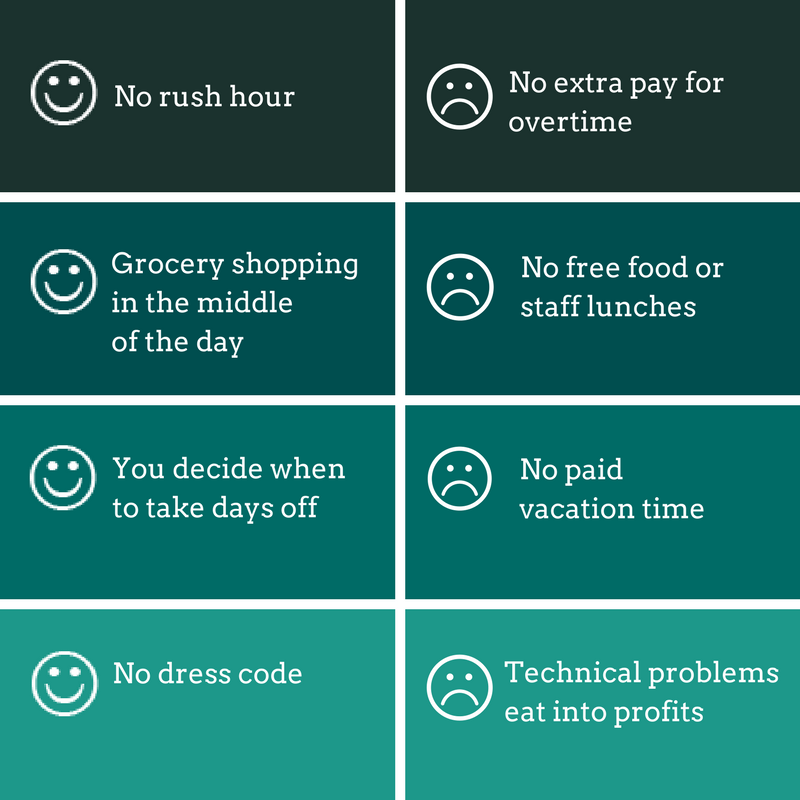
In the beautiful month of September, it’s my new year. I finalize my annual trip around the sun as well as celebrate a full year of returning to being a full-time freelance translator. I’ve lived the dream of being a full-time freelancer before, but it was always translation complemented by teaching or vice versa. I also worked part-time as a translator while holding down a day job as a bilingual loan officer during the global financial crisis and ensuing recession. But today I’m thankful to be back doing what I love full-time, deciding when, how and where I work. To top it off, September ends on International Translation Day.
Reflecting on the past year, one thing I never gave my day job much credit for was how much the hustle and bustle of getting ready for and going to work in the morning really helped me to wake up and be alert. Leaving the house every morning, the rush of cold air on my eyeballs, as much as I despised being up before sunrise and out in the cold, it really did help me kick into gear. At my 9-6 job I would arrive ready to hit the ground running, answering emails and calling people back. Now, my office is located 7 steps from where I sleep. I could literally somersault from bed to my work station and start pecking the keyboard. When you’re working as what you really want to be when you grow up, you need to do it well. Thus I’ve found establishing a morning routine to be essential for saving clients and myself the embarrassment of tired, groggy replies. For me, screen time helps my eyes and brain adjust to daytime activities. I spend the first few minutes of my workday scrolling the news, twitter, reading emails or anything else that piques my interest and gets my brain firing. No output yet, just pondering, drifting and planning.
Another stark change is the appearance of making time vs. killing time. Working for yourself, there’s no pressure to “look busy”. You don’t have coworkers or bosses walking by potentially getting a glimpse of your screen. Even if you are being productive, just having an article off to the side while waiting for the circles to churn the screen you need doesn’t look good in a corporate environment. As my own boss, I can allow tangents of distracted thought reach their eventual conclusions before getting back to the task at hand (deadlines permitting). Sometimes distractions are very helpful when I’m stuck on a term or tripwire in a translation. Allowing for such distractions with others watching over your shoulder can generate tension so I’m grateful to not have to worry about that anymore.
On the other end of that pendulum is that because I am my own boss and have control of my time, people think I have free time all the time and don’t hesitate to interrupt or soak it up. It’s a constant challenge to establish boundaries on concentration vs. interruptions but since my husband tends to be just as busy as I am, we’ve made it work. We’ve learned to keep our phones in the other room and have had to give up vast amounts of socializing to stay on top of things. There are several articles that talk about prioritizing your time as an entrepreneur boiling it down to having to choose 3 of the following 5: Work, Sleep, Fitness, Family & Friends. My take on that is that work is a given if you’re going to be successful running your business. If you want to be on top of your game, you shouldn't sacrifice sleep too much. I’ve balanced fitness and family but unfortunately have neglected my friends. This coming year we’ll be learning how to juggle all of that along with parenthood.
An area I aim to improve in over the next year is blogging. My goal was to start off blogging quarterly. I was later advised it’s better to do it monthly or weekly and me agobié. I got overwhelmed and life happens and I crapped on my blogging goals. All of them. I blogged a miserable 2 times in the past year. I started two more posts that I never finished. The lesson learned, or reinforced, is that goals need to be realistic. I knew in the beginning that quarterly would be attainable but listened to some very well-intentioned marketing gurus and although their advice is solid, I couldn’t keep up. I seriously admire those who can blog on a regular, frequent basis with original, thought-provoking content.
Along those lines, another area I want to develop is finding my ideal marketing mix. I’ve dabbled in a little of everything over the past year from in-person networking to warm emails to social media (LinkedIn, Twitter, Instagram, Facebook and Pinterest), and paid advertising. It’s been fun and I’ve made some great contacts exploring each of these avenues. Now I want to hone in and find my balance between what I like and what’s effective. There’s a great article by Capital Trans based on a translator’s survey about marketing efforts. In the end it’s to each their own so by this time next year I hope to have established my ideal mix.
I would love to hear from other freelancers and translators: What adjustments or “culture shocks” did you encounter when transitioning to become a full-time freelancer?
No matter what language(s) you speak, expressions and idioms are some of the most interesting and culturally revealing parts of a language. Not only can they teach you how to communicate like a local, they also offer cultural and history lessons. Many fall out of use for being so antiquated that they don’t make sense or are irrelevant today, but many more keep coming up “out of the woodwork.”
In the realm of business English, a large part of the expressions floating around today in books, glossaries, lists and articles cover the most professional and most widely used expressions such as “going the extra mile” or a “ballpark number”. Heck, you’ll even find those in job descriptions and business negotiations.
However not many publications cover the expressions used in day-to-day language. Although they’re not taught as professional English, these expressions are frequently present in a corporate setting. That said, I wouldn’t recommend using them in formal correspondence or writing. These are not suitable for company publications, but if you need to know what people are really saying next to the water cooler, you may find these useful:
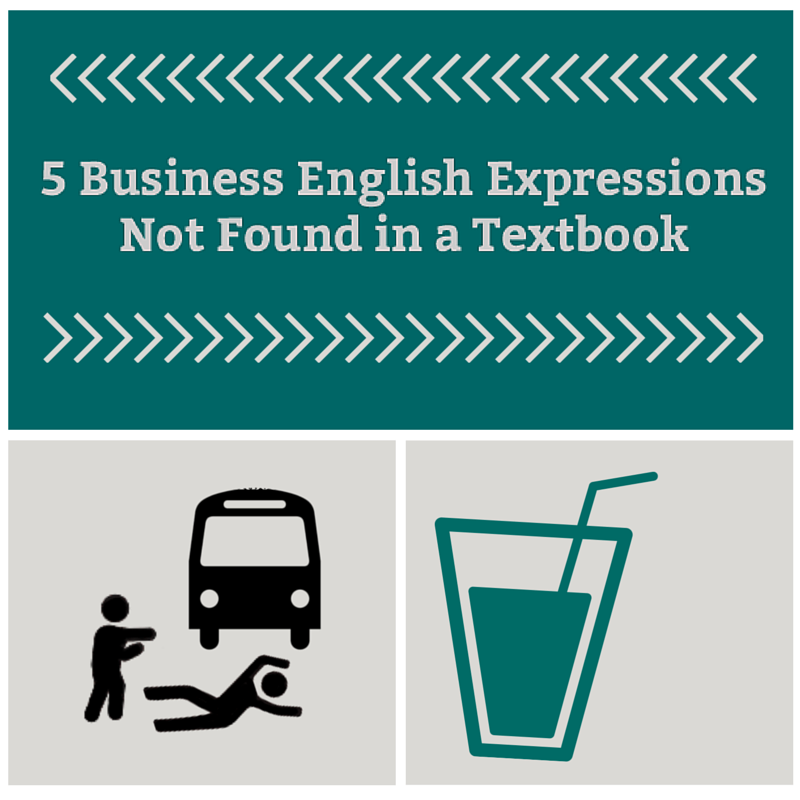
I was taken aback when I first heard this one. Maybe because I was afraid of falling under the wheels of the proverbial bus. It sounds much worse than it is, but regardless if you’re the one under the bus, it will leave tread marks on your face!
Example: I made a mistake with my client’s file and before I had a chance to fix it, Elliott threw me under the bus and told my supervisor. Now I’m in trouble with my supervisor and have to work twice as hard to prove myself again.
The history behind this one is quite dark. You can read more about it here if you’re interested. I prefer to think of it as the punchbowl that only certain people have access to. In order to gain access to the kool-aid, you have to pledge your allegiance to a certain team.
Example: After the directors decided to implement new policies with a harsh impact on the workers, most people got upset but a few coworkers drank the kool-aid and supported the directors’ decisions without question.
This is so typical when dealing with customer service. After you spend so long waiting for someone to help you, then explaining the details of your question or problem, you inevitably get transferred to someone else where you have to start the whole process over again. It seems like the associates are more concerned with answering as many calls as possible instead of helping the client, which is really what they’re in business for.
Example: Whenever clients ask Charlie for help beyond the basics of his job description, he always passes the buck and transfers them to someone else to help them, even if he could have done it.
Although a bit morbid, this expression provides a visualization that you can imagine right away, except for with pink slips rather than bullets. The feeling it can leave behind is akin to the ‘survivor’ effect; people sad for losing their daily companions and knowing that those that were let go are now facing one of life’s most stressful events.
Example: After the company restructured, a lot of my coworkers lost their jobs but I dodged the bullet and am still here.
This is most common with large organizations and especially large organizations working with each other (i.e.; governments and banks) for the same consumer. It’s somewhat like the macro-version of “passing the buck”, but rather than it being individuals, it’s a systemic problem due to company-wide inefficiencies and lack of communication and/or coordination.
Example: After submitting all the paperwork multiple times, I still can’t access my account because they say I haven’t submitted the paperwork. They’re so cumbersome to deal with, it’s like the left hand doesn’t know what the right is doing.
Dictionary of Unfamiliar Words by Diagram Group. S.v. "pass the buck." Accessed January 21, 2016. http://www.thefreedictionary.com/pass+the+buck
Dictionary.com. The American Heritage® Dictionary of Idioms by Christine Ammer. Houghton Mifflin Company. “left hand doesn't know what the right hand is doing, the.” Accessed January 20, 2016. http://dictionary.reference.com/browse/left hand doesn't know what the right hand is doing, the
Forbes. “Drinking the Kool-Aid – In Photos – Most Annoying Business Jargon.” Published January 26, 2012. http://www.forbes.com/pictures/ekij45gdh/drinking-the-kool-aid/#content
Higgins, Chris. “The Jonestown Massacre: The Terrifying Origin of ‘Drinking the Kool-Aid.’ ” Mental Floss, Published November 8, 2012.
http://mentalfloss.com/article/13015/jonestown-massacre-terrifying-origin-drinking-kool-aid
McGraw-Hill Dictionary of American Idioms and Phrasal Verbs. S.v. "go the extra mile." Accessed January 21, 2016. http://idioms.thefreedictionary.com/go+the+extra+mile
Wiktionary the Free Dictionary. “above and beyond.” Last modified January 18, 2016. https://en.wiktionary.org/wiki/above_and_beyond
Wiktionary the Free Dictionary. “dodge a bullet.” Last modified January 19, 2016. https://en.wiktionary.org/wiki/dodge_a_bullet
Wiktionary the Free Dictionary. “throw under the bus – Wiktionary.” Last modified January 19, 2016. https://en.wiktionary.org/wiki/throw_under_the_bus

If you have a problem or a project for which you may need help from a lawyer but don’t know where to start, here are some resources to guide you to find the services and professionals that can help.
The sectors most requested for help are:
Si tienes un problema o un proyecto y puede ser que necesites la ayuda de un abogado pero no sabes adonde empezar, aquí hay algunos recursos para orientarte y buscar los servicios y profesionales que te pueden ayudar.
Las áreas en que más se pide ayuda son:
Command respect in your business dealings. Shark Translations is committed to help you navigate language barriers and get international business done right. Whether it’s corporate training materials to ensure your staff is all on the same page, website translations to expand your audience by up to 400 million readers, or legal documents to help your family be together, Shark Translations is your go-to language resource.
You will sound like a savvy pro and impress your future clients with smooth English to get your point across and business done. You’ve got a shark on your side.
Read More
English translations of Spanish and Portuguese documents. Specializing in Business, Educational, Financial and Legal texts.